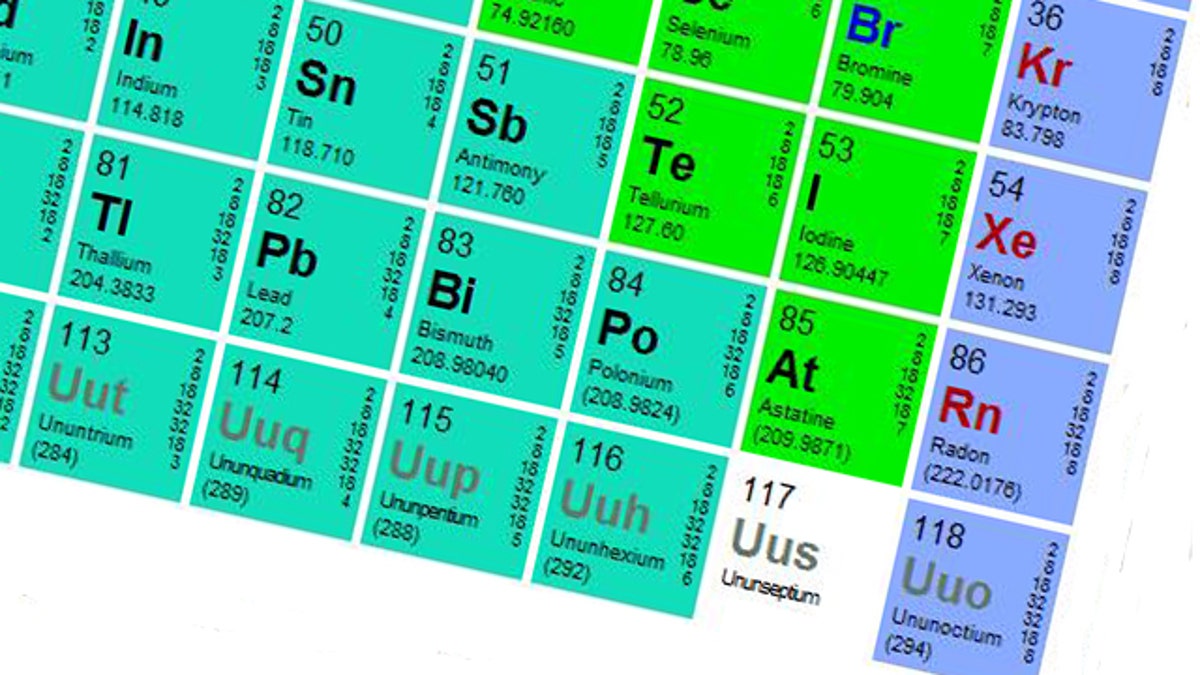
Call it Astoundium -- at least for now.
Swedish scientists report fresh evidence confirming the existence of a new element for the periodic table, the “telephone book” of matter that makes up the universe. First discovered a decade ago, this particular substance proved hard to confirm -- after all, atomic number 115 doesn’t occur naturally anywhere on earth.
By bombarding calcium ions at a thin film of americium -- that’s atomic number 95, for the forgetful -- an international team of researchers led by physicists from Lund University measured the element’s alpha decay, a “fingerprint” of a given element.
The element has been tentatively named “ununpentium” since its discovery in 2003, but an official name has not yet been given, and the element’s very existence remained unconfirmed until now.
“This was a very successful experiment and is one of the most important in the field in recent years,” said Dirk Rudolph, professor at the Division of Atomic Physics at Lund University.
Besides the observations of the new chemical element, the researchers have also gained access to data that gives them a deeper insight into the structure and properties of super-heavy atomic nuclei.
Scientists have created heavier and heavier synthetic elements in recent years, the most massive being element 118, temporarily named ununoctium. Such experiments can offer insight into how atoms work.
The new evidence for the chemical element is presented in the scientific journal “The Physical Review Letters” on August 27.
